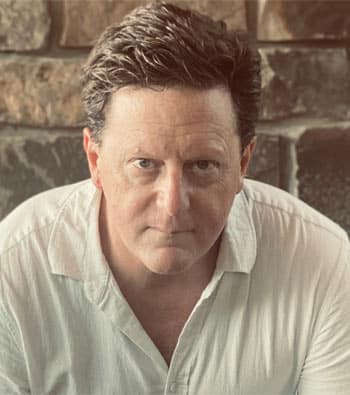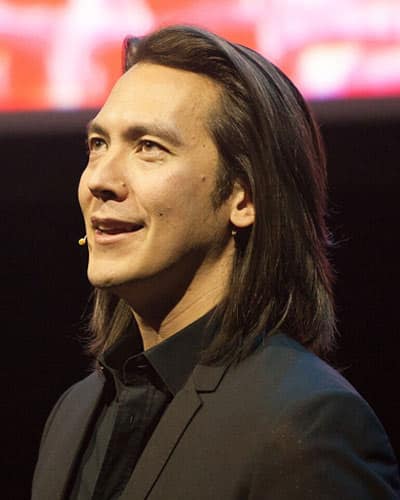Douglas Coupland

Douglas Coupland is an influential Canadian novelist and artist renowned for his ability to capture the zeitgeist of contemporary culture and his distinct voice in both literature and visual arts. With works that delve into themes of technology, societal shifts, and human identity, Coupland has cemented his place as a cultural commentator for modern generations.
Early life
Douglas Coupland was born on December 30, 1961, at RCAF Station Baden-Soellingen in West Germany. He was the second child in a brood of four boys to Douglas Charles Thomas Coupland, an officer in the Royal Canadian Air Force with a medical background, and C. Janet Coupland, who had a degree in comparative religion from McGill University. In 1965, the family relocated to West Vancouver. After finishing his military stint, Douglas’s father initiated a private medical practice there.
Coupland often says his early years left him a “tabula rasa” or “blank slate”. He shared, “My maternal lineage has a history of stern preachers who, for over a century, spread the gospel across the prairies. While her parents aimed to deviate from that legacy, they unintentionally passed down those very values to her. My paternal family had quite similar inclinations.”
After completing his education at Sentinel Secondary School in West Vancouver in 1979, Douglas embarked on a journey to McGill University. Inspired by his father, he intended to delve into the sciences, particularly physics. However, after a year, he decided to return to Vancouver to pursue his artistic inclinations.
Coupland found his haven at the Emily Carr College of Art and Design in Vancouver. In his words, this period was “the most enriching four years of my life. It felt like home. It was this unique time, sandwiched between the remnants of the hippie era and the dawn of political correctness. The environment was incredibly collaborative, with conversations sparking everywhere.” By 1984, Coupland had earned his degree from Emily Carr, majoring in sculpture. His thirst for knowledge led him further to the European Design Institute in Milan and the Hokkaido College of Art & Design in Japan. In 1986, while in Japan, he broadened his horizons by undertaking courses in business science, fine arts, and industrial design.
Coupland’s design career blossomed in Tokyo. However, the city’s humid summers adversely affected his skin, compelling him to move back to Vancouver. Just before departing Japan, he had sent a postcard to a friend in Vancouver. This postcard piqued the interest of the friend’s husband, a magazine editor, leading to an offer for Coupland to pen down articles for his magazine. Writing became a way for Coupland to sustain his art studio. On becoming an author, Coupland remarked, “It happened serendipitously. I never envisioned myself as a writer, but now, I can’t imagine doing anything else.” He proudly mentions that he hasn’t been conventionally employed since 1988.
Career
Douglas Coupland’s breakout in the literary world came with the 1991 publication of “Generation X: Tales for an Accelerated Culture.” This novel not only earned him critical acclaim but also introduced the term “Generation X” to describe the post-baby boom generation. This nomenclature encapsulated the sentiments of a generation grappling with the onset of a technology-driven age, marked by feelings of directionlessness and disconnection from traditional societal structures.
Following the success of “Generation X,” Coupland penned numerous novels, each capturing unique facets of modern life. Titles like “Microserfs” and “JPod” delved into the world of tech employees in the Silicon Valley era, while “Life After God” and “Eleanor Rigby” explored deeper, existential themes.
Parallel to his literary career, Coupland’s prowess in visual arts also flourished. Over the years, he has exhibited in galleries and museums internationally. His art, like his written work, frequently touches upon themes of identity, technology, and modern culture. Whether through large-scale sculptures, paintings, or digital media, Coupland’s artistry remains both provocative and introspective.
Coupland’s unique ability to bridge the worlds of literature and visual art, while providing commentary on contemporary society, ensures his position as one of the most influential cultural figures of his time. Whether through the written word or visual installations, Coupland challenges and engages audiences, prompting introspection and discussion on the modern human experience.

Net Worth
While exact figures fluctuate and remain private, Douglas Coupland’s success in both the literary and art worlds has undoubtedly garnered him significant financial success. Sales from his books, combined with earnings from art exhibitions, public installations, and collaborations with brands and institutions, have contributed to his wealth. As of the last known estimates, Coupland’s net worth is believed to be in the millions, although specifics are not public knowledge.
Achievement
Douglas Coupland’s multi-faceted career is marked by numerous achievements:
Related Bios

Dahlia Kurtz
Dahlia Kurtz is a nationally syndicated columnist, journalist, podcast host, and talk show host from Montreal, Canada. S...
Read More
J.C. Hallman
John Christopher Hallman, known professionally as J.C. Hallman, is a critically acclaimed American author of both fictio...
Read More
Mike Walsh
As a visionary futurist and author, Mike Walsh has spent over two decades exploring how emerging technologies shape soci...
Read More
Stacey Hanke
Stacey Hanke is the CEO of her own consulting and training company, Stacey Hankey, Inc. Possessing an entrepreneurial ba...
Read More
Social Profile
Twitter: @DougCoupland - A platform where he shares thoughts on contemporary events, snippets from his life, and engages with fans.
Instagram: Not known. While Douglas does have a presence on the platform, it is sporadic, with more focus on his artwork and installations.